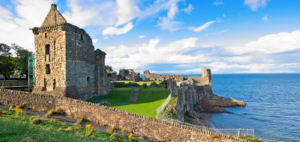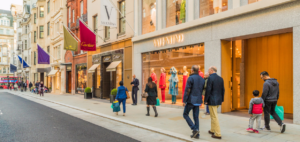The Surprising History of the Irish Flag
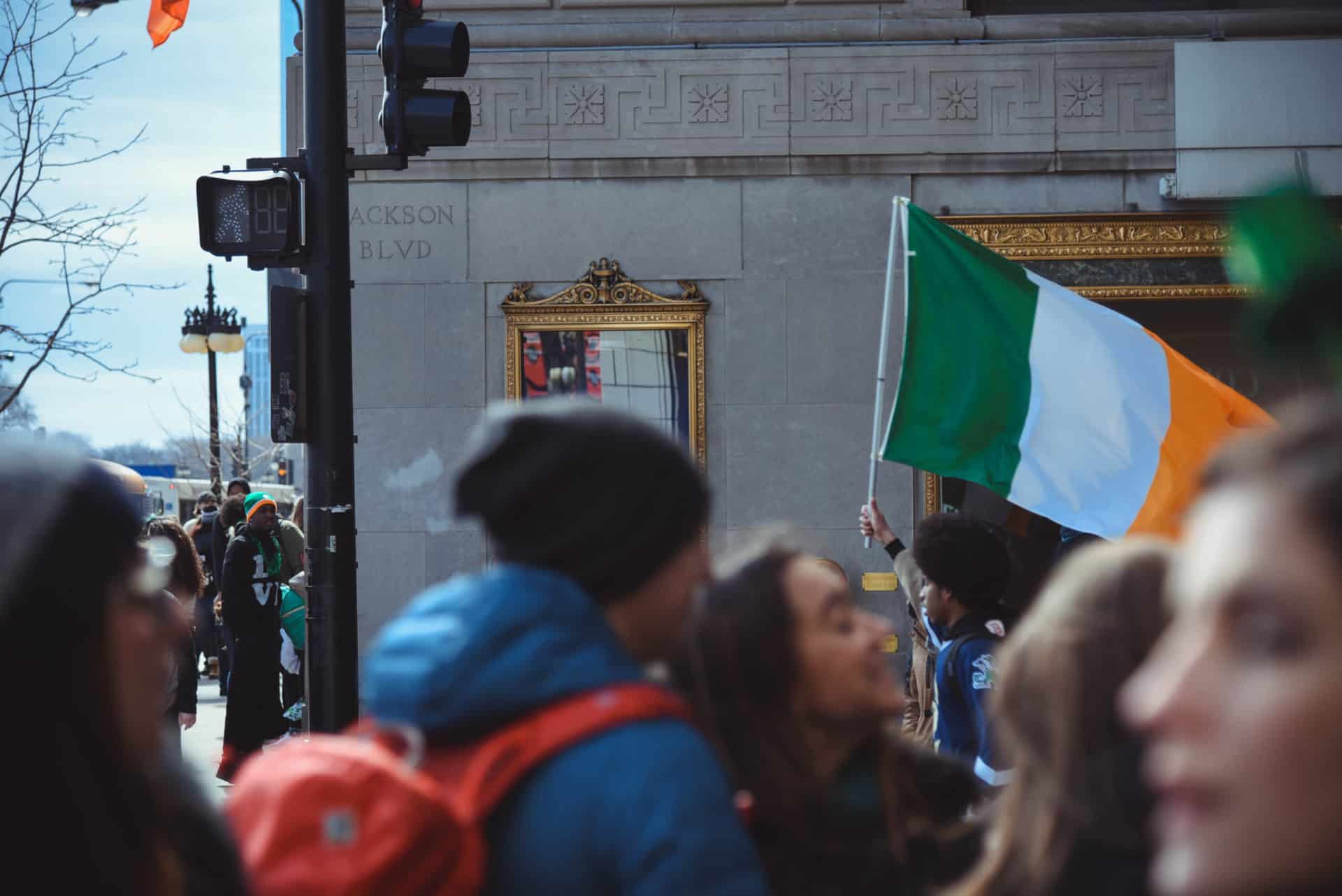
Updated On: April 21, 2024 by Ciaran Connolly
Flags are hugely important because they help us recognise different countries worldwide. Many of the world’s flags have fascinating histories that help give meaning to other places.
The Irish flag is one of the most recognised and spoken of worldwide. It is also famously referred to as the tricolour flag. Here are some interesting facts to learn about this flag.
Table of Contents
What does the Irish Flag Symbolise?
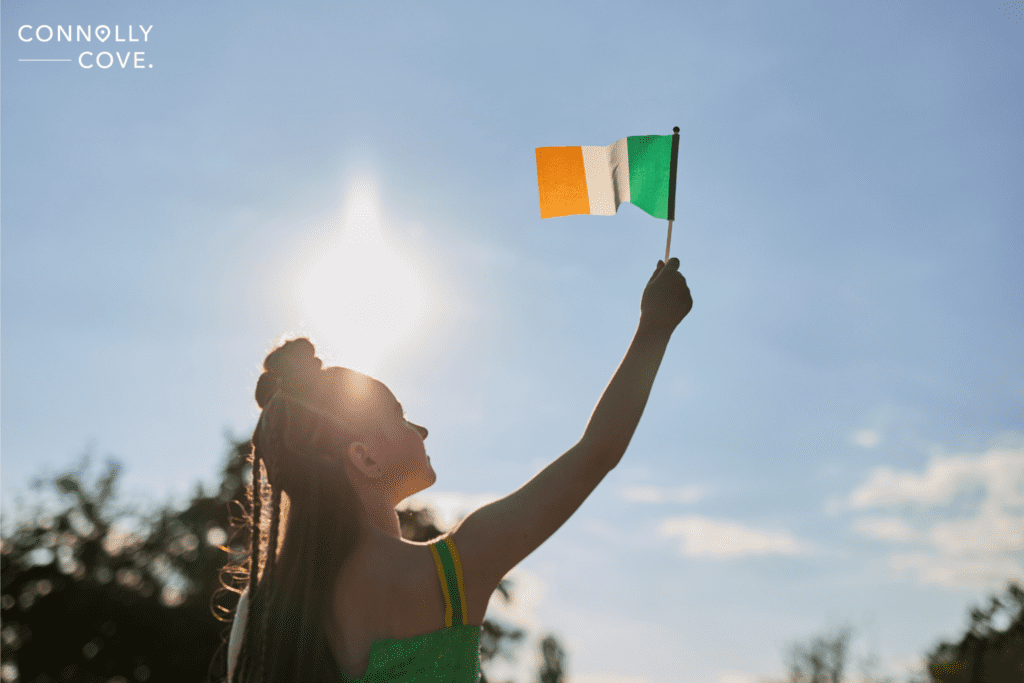
As the world recognises, the Irish flag has three different colours. Those colours were not randomly chosen; each bears essential significance to the country. It has also been one of the influential symbols of Ireland. Those three famous colours include green, white, and orange, respectively.
The green part of the flag refers to the Roman Catholic community in Ireland. Some sources also claim it relates to the Irish folk in general. For many centuries, the Irish have been associating the green colour with their culture. Thus, it makes sense to use this particular colour to refer to themselves.
On the other hand, the orange colour supposedly represents the supporters of William of Orange. They were a minority Protestant community in Ireland, yet they were among the influential supporters of William. The latter had defeated King James II and the Irish Catholic army. This took place back in 1690 in the Battle of the Boyne. The reason people referred to William as such goes back to the Principality of Orange in the south of France. It was a stronghold for Protestants since the 16th century. Thus, the colour in the flag refers to the attempt at merging the Orange order with the Irish independence movement.
The white in the centre signifies the peace between Protestants and Irish Catholics.
The Symbolism of the Tricolour as a Whole
We have already broken down the elements that make the Irish flag up. However, the tricolour flag as a whole represents something significant. The intention of bringing those three colours together is a potent symbol of hope. This hope is for the union of people from different backgrounds and traditions within the borders of Ireland.
In other words, the flag sends a hypnotising message that Ireland is a land that embraces people from different origins.
Afterwards, the Constitution added an entitlement that whoever was born in Ireland became part of the independent Irish nation. This inclusion does not exclude anyone regarding religion, political conviction, or even ethnic origin—Showcasing Ireland as a progressive and welcoming nation.
The First Time the Celtic Flag Flew in the Air
The new Irish flag was first officially used in 1848. To be more precise, Thomas Francis Meagher, a young Irish rebel, flew it on 7 March 1948. That incident took place in Waterford City at the Wolfe Tone Confederate Club. The Irish flag flew high for eight days until the British took it down.
What Meagher did back then was regarded as bold and heroic: he announced freedom and independence. Even in the US, people still remember him as a General in the Union Army and Governor of Montana. People perceive him to have had an influential role in shaping Irish history immensely.
The motives behind Meagher’s actions were driven by the revolutions of 1848 that took place across Europe. He had other young Irelanders as mere supporters. They even travelled to France after overthrowing King Louise Phillipe I.
According to them, congratulating the rebels who did it was proper. There, Meagher again presented the tricoloured Irish flag made of French silk.
The Old Irish Flag
Some parts of the world sometimes refer to the flag as the Celtic flag. In Irish, it is “’Bratach na hÉireann.” Long before the tricolour came into the world, another flag signified Ireland.
It had a green background—yes, green also—and a harp attached to a deity-like figure. The harp remains one of the prominent symbols of Ireland to this day because Ireland is the only country with an extraordinary musical instrument associated with itself.
They found using it as the country’s national symbol very convenient. Owen Roe O’Neill was the Irish soldier who introduced the Irish flag in 1642 and was also the leader of the O’Neill dynasty.
The Irish Flag vs. the Ivory Coast Flag
The globe is laden with several continents that embrace a wide array of countries. Some of them share some traits in terms of culture, traditions, and so forth. However, not all of them share the same flag, but we can find some colours overlap with many.
Not just colour but also the design itself can be similar to a great extent. This is the case with the Irish flag; it looks a lot like that of the Ivory Coast. People have fallen into this trap for many years because they are identical but have different meanings.
Each flag represents something significant in its relevant country. Here is the surprise that some people barely realise: there’s one distinct difference between the two flags. They both have three vertical stripes of orange, white, and green. However, the order of colours differs.
The Irish flag starts with green on the left side and then goes white and orange. On the other hand, the Ivory Coast flag looks like the Irish one flipped horizontally. So, it goes orange, white, and green. The consistency of the white colour in the middle may confuse. We have already learnt about the implications of each colour of the Irish flag. It’s time to learn about those of the Ivory Coast.
The Significance of the Tricoloured Flag of the Ivory Coast
It is widely known that the country is referred to as Côte d’Ivoire—the French version of the name. No wonder the name is used in French, for the country used to be a French colony before becoming independent. They adopted the flag in December 1959, two weeks before the country’s official independence.
This is one more difference between the Irish flag and that of the Ivory Coast. The meaning that the three colours in the Ivory Coast represent is rather geographical than historical. Green is a genuine representation of the coastal forests. It’s convenient as green can be highly associated with plants and trees, hence the coastal forests.
On the other hand, the orange colour represents the grasslands of the savanna, while the white colour signifies the country’s rivers. So, the Ivory Coast flag merely represents the land’s nature. That is a massive difference since the Irish flag’s tricolour implies a political meaning.
Interesting Facts to Know About the Irish Flag
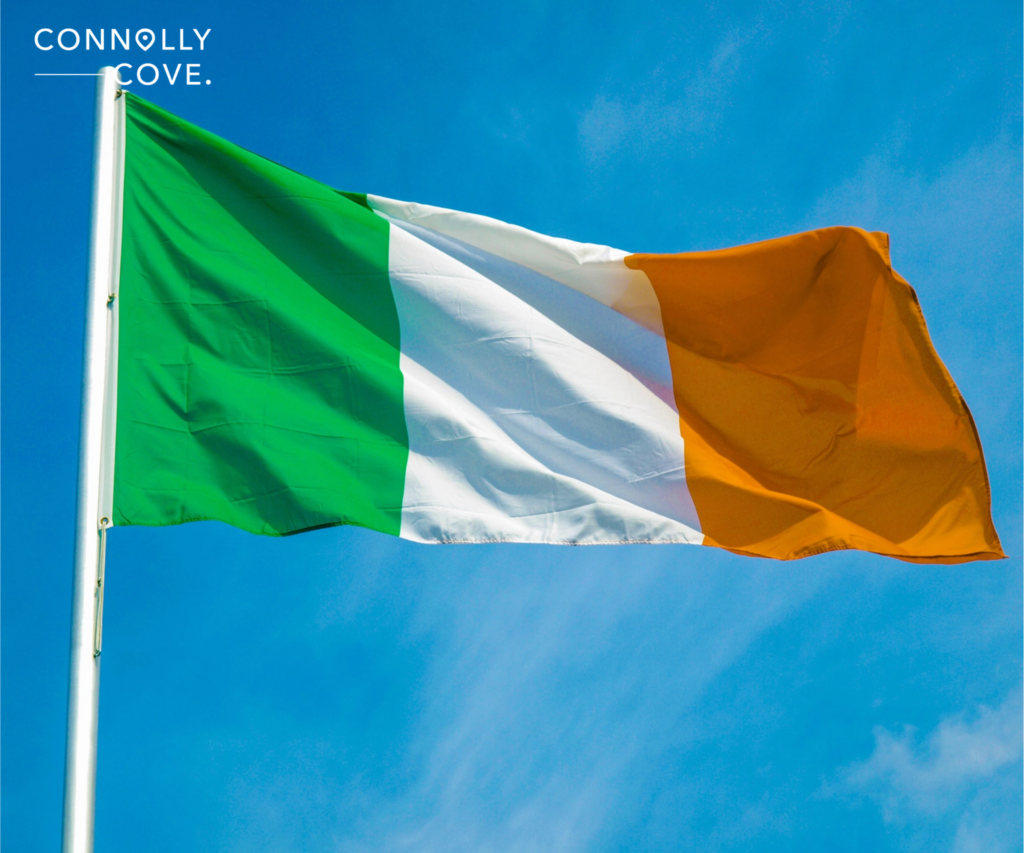
While it’s quite a fascinating flag that has inspired many figures worldwide, some facts remain mysterious. There are so many facts about the Celtic flag of Ireland that people have hardly ever heard of. Let’s learn about them one by one.
- Pantone 347 is an Irish Shade:
Green plays a vital role in Ireland’s culture worldwide. Little did we know that a green shade is specified for Ireland in the colour palette. This colour is Pantone 347, the shade featured on the Irish flag.
So little flags use this colour all over the globe. Maybe that is why the world has associated it with Ireland. Or, perhaps the Irish themselves adopted the colour as their own.
- The Designers were French Women:
Women have always played vital roles in history, and many have shaped cultures and politics in one way or another. We have already known the two rebellions that presented the new flag of Ireland to the Irish citizens.
But we haven’t mentioned the three brilliant women behind the profound design. The eager Young Irelanders Thomas Francis Meagher and William Smith O’Brien travelled to France in 1848. The revolutions in Berlin, Rome, and Paris inspired them immensely.
Thus, they arrived in France, meeting three local women who made up the new Irish flag. The tricolour of the French flag inspired them. So, they made the Irish flag quite similar in design but different in colour. They had weaved the Irish flag from French silk, which the men presented to the Irish people when they returned home.
- Waterford City was the First to Witness the New Flag:
Maybe we have already mentioned this fact, but we haven’t mentioned that Meagher was initially born in Waterford. He was the leader of the Young Irelanders during the Rebellion of 1848. It was anticipated that he would introduce the flag to the citizens.
But his choice of Waterford, in particular, remains mysterious. Yet, the fact that he came from this city added some sense to the whole story. The tricolour flag continued flying for a week before the British Troops brought it down.
Later, Meagher was accused of betrayal, and the flag would not fly again for 68 years. However, at his trial, Meagher professed proudly that there would be a day when the flag reached the sky again. And here we are, more than a century later; the Irish flag remains as prominent as ever.
- Ireland’s National Flag Became Official Only in 1937:
Surprisingly, the flag was not official when the Irish citizens started using it. It only became official in 1937, yet it was used long before that. The Irish War of Independence raised the tricolour flag, and it took place from 1919 until 1921. Moreover, the same goes for the Irish Free State, which grew in 1922. Starting from 1937, the Irish Constitution included this flag and deemed it official.


